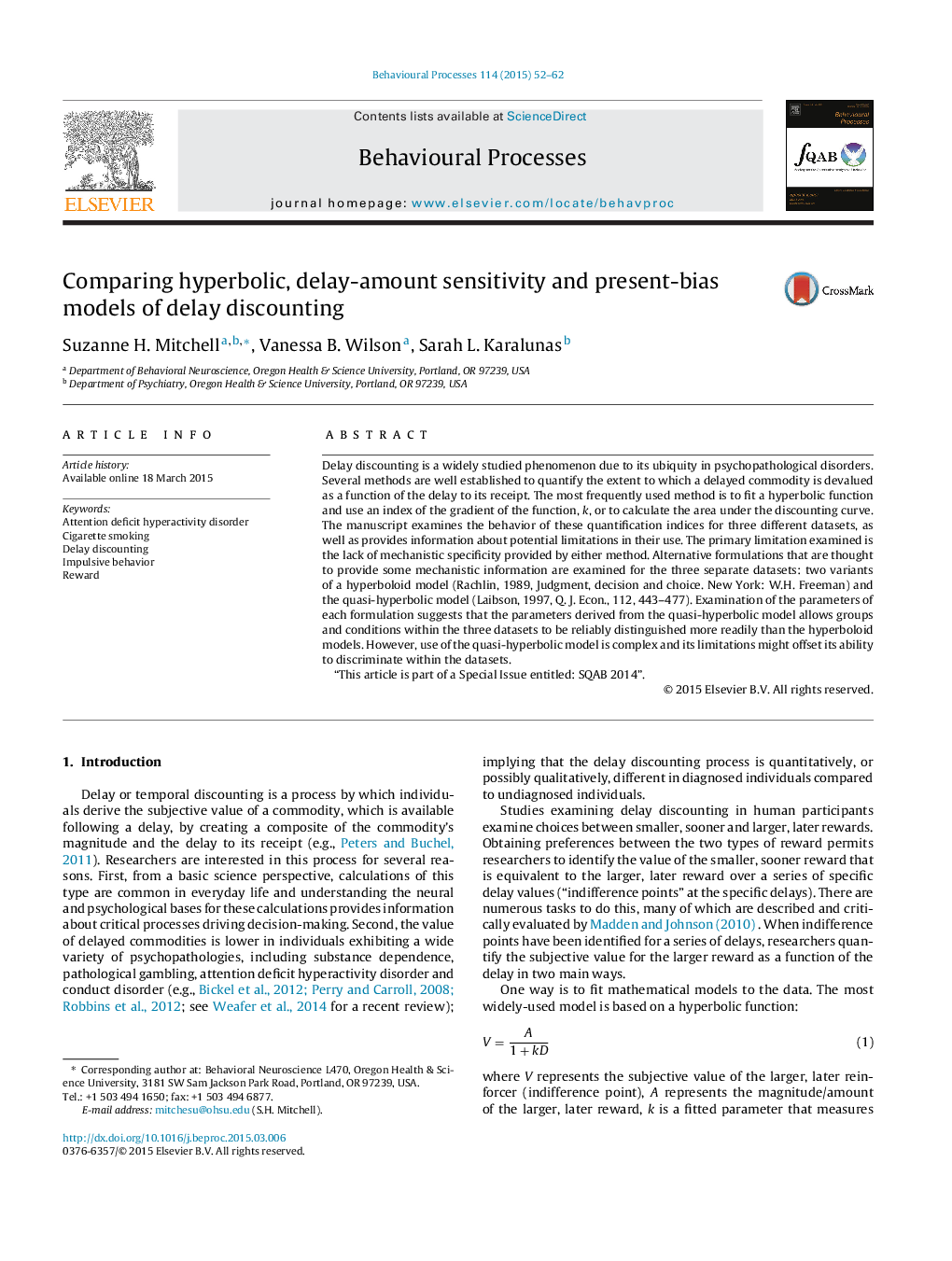| کد مقاله | کد نشریه | سال انتشار | مقاله انگلیسی | نسخه تمام متن |
|---|---|---|---|---|
| 2426620 | 1553166 | 2015 | 11 صفحه PDF | دانلود رایگان |
• Mathematical indices of delay discounting were compared for 3 datasets.
• The hyperbolic function slope (k) consistently differentiated groups and conditions.
• Area under the discounting function curve did not consistently differentiate.
• Models including amount and delay sensitivity also did not differentiate.
• Present value bias did differentiate though interpretational caveats are suggested.
Delay discounting is a widely studied phenomenon due to its ubiquity in psychopathological disorders. Several methods are well established to quantify the extent to which a delayed commodity is devalued as a function of the delay to its receipt. The most frequently used method is to fit a hyperbolic function and use an index of the gradient of the function, k, or to calculate the area under the discounting curve. The manuscript examines the behavior of these quantification indices for three different datasets, as well as provides information about potential limitations in their use. The primary limitation examined is the lack of mechanistic specificity provided by either method. Alternative formulations that are thought to provide some mechanistic information are examined for the three separate datasets: two variants of a hyperboloid model (Rachlin, 1989, Judgment, decision and choice. New York: W.H. Freeman) and the quasi-hyperbolic model (Laibson, 1997, Q. J. Econ., 112, 443–477). Examination of the parameters of each formulation suggests that the parameters derived from the quasi-hyperbolic model allows groups and conditions within the three datasets to be reliably distinguished more readily than the hyperboloid models. However, use of the quasi-hyperbolic model is complex and its limitations might offset its ability to discriminate within the datasets.“This article is part of a Special Issue entitled: SQAB 2014”.
Journal: Behavioural Processes - Volume 114, May 2015, Pages 52–62
